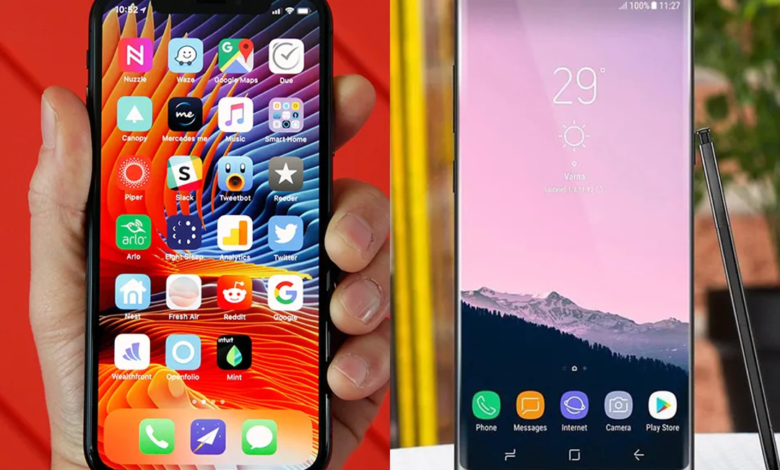How to Optimize Your Smartphone for Peak Performance
Optimizing your smartphone for peak performance ensures smooth operation, extended battery life, and enhanced security with these practical tips.

Making the most of your smartphone’s performance is crucial in the quick-paced digital world of today. Our cellphones are more than just gadgets; they are essential tools that enable us to be entertained, productive, and connected. But when we fill them up with more software, images, and data, they may begin to lag, which will make them less effective and more difficult to use. You can get the most of your smartphone by following this tutorial, which will bring you through practical methods and strategies to ensure your device performs properly.
Sustaining the performance of your smartphone involves more than simply keeping it fast; it also involves prolonging its lifespan and improving your entire experience. Optimising your smartphone can help with everything from security and privacy to battery life management and storage management. These pointers can assist you in navigating the difficulties of smartphone maintenance, whether you’re a tech geek or just want your phone to function well. That way, your gadget will continue to be a dependable companion in your everyday life.
How to Optimize Your Smartphone for Peak Performance
Key Components Affecting Performance
The processor, or CPU, is the brain of your smartphone. It handles all tasks and operations, and a more powerful CPU generally means faster performance. However, even the best processors can get bogged down with excessive demands.
RAM
Random Access Memory (RAM) is crucial for multitasking. It temporarily stores data that your smartphone needs quick access to. More RAM allows for smoother transitions between apps and better handling of complex tasks.
Battery Life
Battery performance impacts how long you can use your phone before needing a recharge. Efficient battery management is key to keeping your phone running throughout the day.
Managing Storage Space
Efficient storage management is crucial for maintaining performance. Use cloud services to store files and media, and regularly delete old or unnecessary files to free up space.
Using Cloud Services
Cloud services like Google Drive or iCloud allow you to store files remotely, freeing up local storage space on your device.
Deleting Old Files and Media
Regularly review and delete old photos, videos, and files that you no longer need. This helps in maintaining a clutter-free and efficient smartphone.
Keeping Software Up-to-Date
Importance of Software Updates
Software updates often include performance improvements, bug fixes, and security patches. Keeping your operating system and apps updated ensures your smartphone runs efficiently and securely.
How to Check for Updates
Regularly check for updates in your phone’s settings. Most smartphones can be set to update automatically, ensuring you always have the latest enhancements.
Updating Apps Regularly
Apps receive updates to improve functionality and performance. Enable automatic updates to keep your apps running smoothly.
Identifying Battery Drainers
Some apps and settings drain your battery faster than others. Identifying these culprits can help you manage your battery more effectively.
Screen Brightness
High screen brightness consumes a lot of power. Lowering brightness or using adaptive brightness can extend battery life.
Background Apps
Apps running in the background can drain your battery. Closing unnecessary apps can help conserve power.
Managing Connectivity Settings
Turning Off Unused Connectivity Features
Features like Bluetooth, NFC, and location services can drain your battery when left on. Turn them off when not in use to save power.
Using Wi-Fi Over Mobile Data
Wi-Fi generally uses less power than mobile data. Use Wi-Fi whenever possible to conserve battery.
Airplane Mode Benefits
Enabling airplane mode disables all wireless communications, which can save battery in areas with poor signal reception.
Enhancing Security and Privacy
Installing Reliable Security Apps
Security apps can protect your smartphone from malware and other threats. Choose a reputable app to ensure your device stays secure.
Regularly Checking App Permissions
Review the permissions granted to your apps. Restrict permissions that seem unnecessary to protect your privacy and improve performance.
Using Strong Passwords and Biometrics
Secure your device with strong passwords or biometric options like fingerprint or facial recognition to prevent unauthorized access.
Customizing User Experience
Personalizing Settings for Efficiency
Customizing settings can improve usability and efficiency. Adjust settings like font size, home screen layout, and notification preferences to suit your needs.
Utilizing Widgets and Shortcuts
Widgets and shortcuts can provide quick access to frequently used apps and functions, enhancing your smartphone experience.
Custom Launchers and Themes
Custom launchers and themes can change the look and feel of your smartphone, making it more personal and potentially more efficient.
Utilizing Built-In Optimization Tools
Device Maintenance Tools
Most smartphones come with built-in optimization tools that can clean up your device and enhance performance. Regularly use these tools to maintain your phone.
Third-Party Optimization Apps
In addition to built-in tools, there are many third-party apps designed to optimize smartphone performance. Choose well-reviewed apps from reputable developers.
Managing Background Processes
Identifying Resource-Heavy Apps
Some apps use more resources than others. Identify these apps and limit their usage to free up Random access Memory (RAM) and CPU power.
Limiting Background Activity
Restricting background activity for less important apps can improve overall performance. Use your phone’s settings to manage background processes.
Using Task Manager Apps
Task manager apps can help you monitor and control which apps are running, allowing you to optimize performance effectively.
Regular Maintenance Tips
Weekly and Monthly Maintenance Tasks
Perform regular maintenance tasks like clearing cache, updating software, and reviewing storage usage to keep your phone in top shape.
Benefits of Factory Reset
If your phone is significantly slowed down, a factory reset can often restore it to its original performance levels. Just remember to back up your data first.
Creating Backups
Regular backups protect your data in case of loss or damage. Use cloud services or external storage to keep your important information safe.
Advanced Optimization Techniques
Rooting and Custom ROMs
For advanced users, rooting your device and installing custom ROMs can provide greater control and customization, though it comes with risks.
Overclocking the Processor
Overclocking can boost performance but may lead to overheating and reduced battery life. Proceed with caution and ensure proper cooling.
Using Developer Options
Enabling developer options in your phone’s settings can give you access to advanced features that can help optimize performance.
Troubleshooting Common Issues
Slow Performance
If your phone is slow, try clearing cache, uninstalling unused apps, and updating software. These steps often resolve performance issues.
Frequent Crashes
Frequent crashes can be caused by faulty apps or software bugs. Update or reinstall apps and keep your operating system up-to-date.
Connectivity Problems
For connectivity issues, check your network settings, restart your device, and ensure your software is updated.
Best Practices for Longevity
Avoiding Overcharging
Overcharging can degrade your battery over time. Unplug your phone once it’s fully charged to maintain battery health.
Protecting the Device Physically
Use a case and screen protector to prevent physical damage. Avoid exposing your phone to extreme temperatures or moisture.
Regularly Replacing the Battery
Batteries lose capacity over time. Replacing an old battery can significantly improve performance and battery life.
Read More: Common Mistakes in Personal Injury Claims and How to Avoid Them
Conclusion
Aiming for maximum performance on your smartphone is a continuous process that calls for careful use and routine maintenance. You can make sure your device functions easily and effectively by controlling battery life, optimising security, removing unwanted clutter, and updating software. These tips will increase your smartphone’s speed and responsiveness while also extending its lifespan and making it a dependable daily companion.
Keep in mind that having a smartphone that is optimised can greatly improve your overall experience, making every interaction fun and easy. Your device’s performance will significantly improve if you incorporate the strategies and recommendations covered in this article into your daily routine. Whether you’re a tech aficionado or a casual user, following these steps will help you make the most of your smartphone and maintain its optimal performance for years to come.
FAQs
How often should I clear my cache?
Clearing your cache every few weeks can help maintain optimal performance without impacting your user experience.
Can optimization apps really improve performance?
Yes, reputable optimization apps can help manage resources, clear junk files, and enhance overall performance.
Is it safe to use third-party optimization tools?
Generally, yes, but ensure you download apps from reputable developers and read user reviews to avoid potential security risks.
How can I tell if an app is draining my battery?
Most smartphones have battery usage statistics in the settings, showing which apps consume the most power. Review these regularly to manage battery drain.
What’s the best way to back up my smartphone data?
Using cloud services like Google Drive, iCloud, or other backup apps ensures your data is safe and easily recoverable in case of device loss or damage.












One Comment